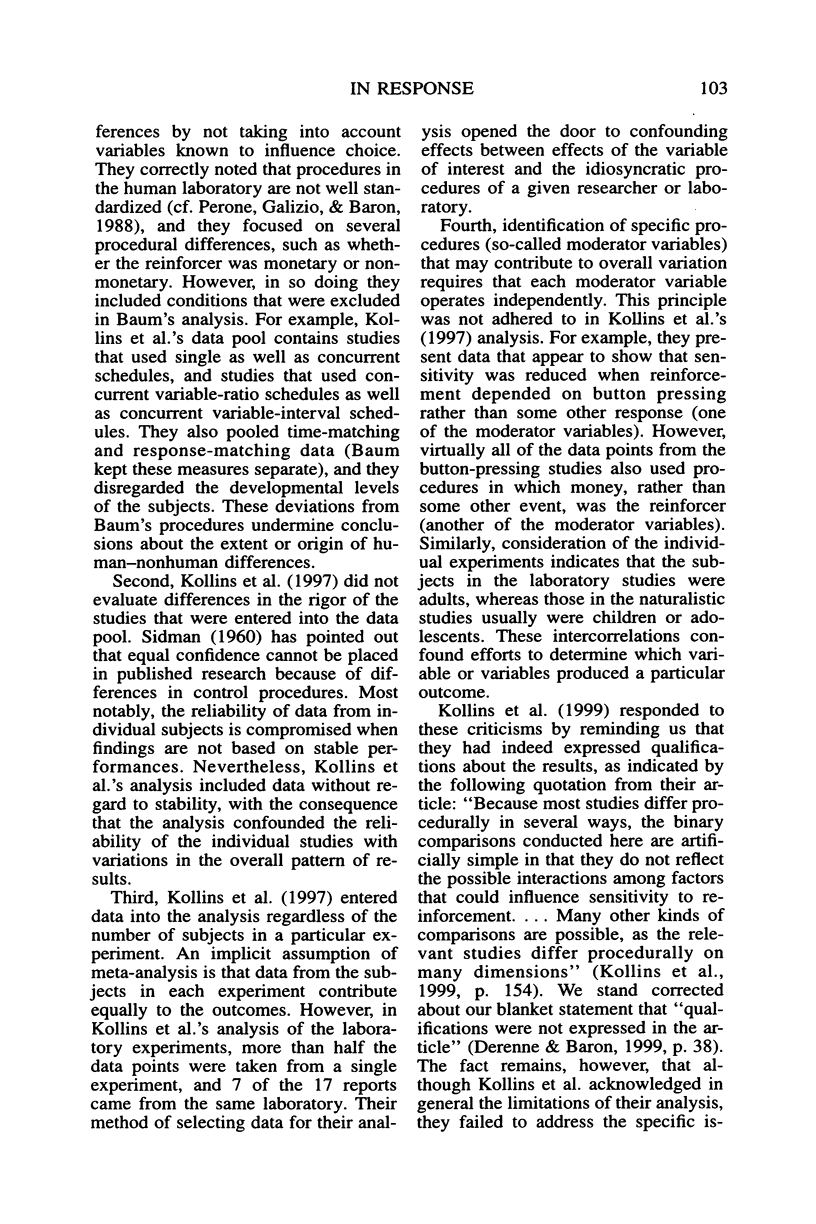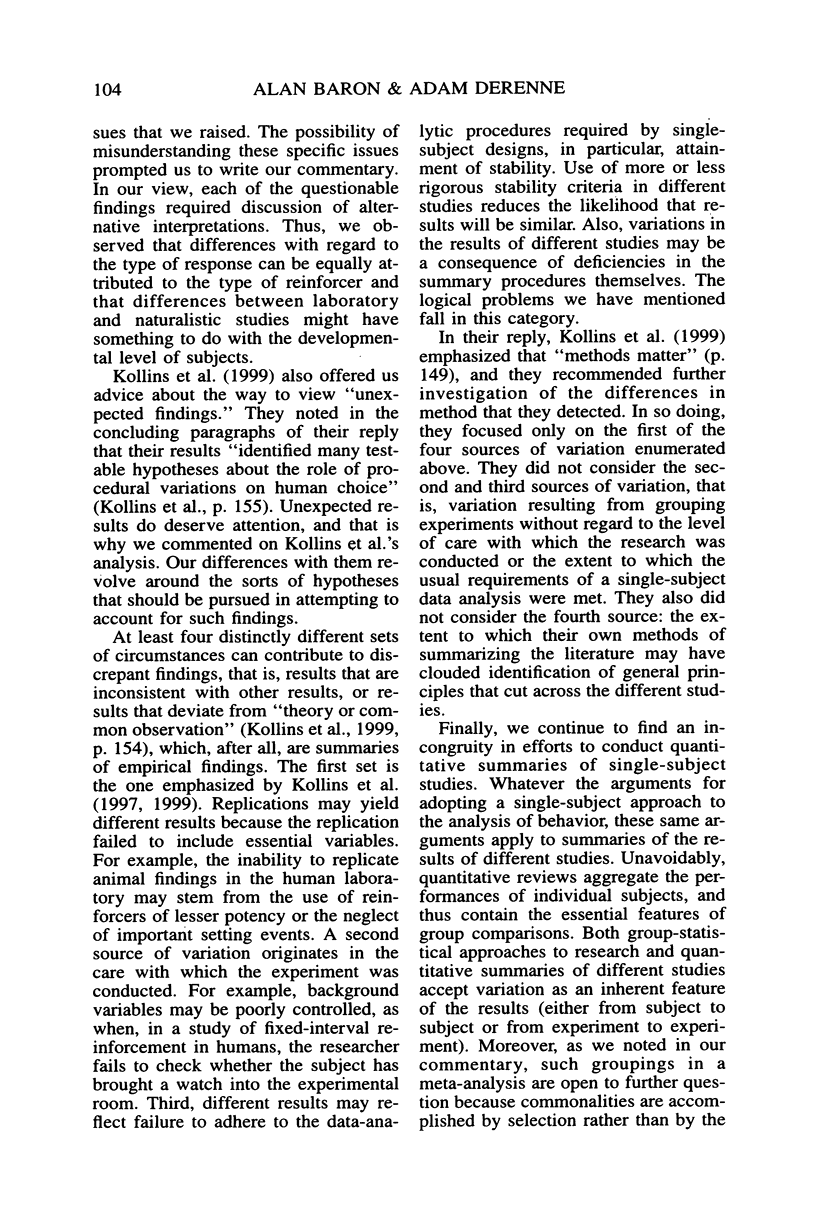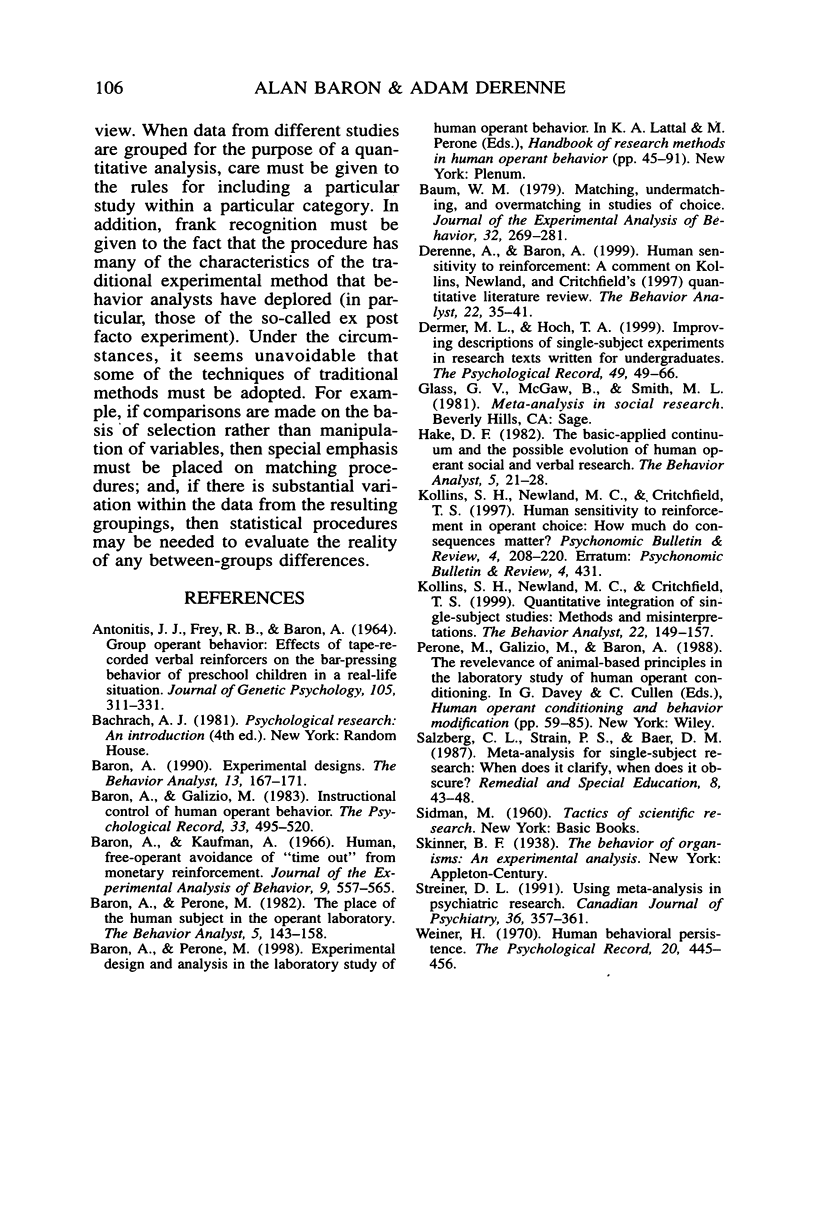Abstract
Kollins, Newland, and Critchfield (1999) responded to our comments about their review by arguing that their quantitative summary was not a meta-analysis and should not be criticized in these terms. We reply that regardless of what they call their review, it included confounding effects that make interpretations of the results problematic. Kollins et al. also argued that unexpected findings of the sort they reported can serve as a spur for further research. We reply that the understanding of findings that deviate from existing knowledge may well require empirical investigation. Such endeavors, however, should begin with an evaluation of the review procedures that suggested the existence of the differences. Finally, we emphasize that quantitative summaries of individual data are, in the end, a form of group comparison. The implications of using group methods to clarify individual data deserve frank recognition in discussions of the outcomes.
Full text
PDF





Selected References
These references are in PubMed. This may not be the complete list of references from this article.
- ANTONITIS J. J., FREY R. B., BARON A. GROUP OPERANT BEHAVIOR: EFFECTS OF TAPE-RECORDED VERBAL REINFORCERS ON THE BAR-PRESSING BEHAVIOR OF PRESCHOOL CHILDREN IN A REAL-LIFE SITUATION. J Genet Psychol. 1964 Dec;105:311–331. doi: 10.1080/00221325.1964.10533067. [DOI] [PubMed] [Google Scholar]
- Baron A. Experimental designs. Behav Anal. 1990 Fall;13(2):167–171. doi: 10.1007/BF03392533. [DOI] [PMC free article] [PubMed] [Google Scholar]
- Baron A., Kaufman A. Human, free-operant avoidance of "time out" from monetary reinforcement. J Exp Anal Behav. 1966 Sep;9(5):557–565. doi: 10.1901/jeab.1966.9-557. [DOI] [PMC free article] [PubMed] [Google Scholar]
- Baron A., Perone M. The place of the human subject in the operant laboratory. Behav Anal. 1982 Fall;5(2):143–158. doi: 10.1007/BF03392383. [DOI] [PMC free article] [PubMed] [Google Scholar]
- Baum W. M. Matching, undermatching, and overmatching in studies of choice. J Exp Anal Behav. 1979 Sep;32(2):269–281. doi: 10.1901/jeab.1979.32-269. [DOI] [PMC free article] [PubMed] [Google Scholar]
- Derenne A., Baron A. Human sensitivity to reinforcement: A comment on Kollins, Newland, and Critchfield's (1997) quantitative literature review. Behav Anal. 1999 Spring;22(1):35–41. doi: 10.1007/BF03391976. [DOI] [PMC free article] [PubMed] [Google Scholar]
- Hake D. F. The basic-applied continuum and the possible evolution of human operant social and verbal research. Behav Anal. 1982 Spring;5(1):21–28. doi: 10.1007/BF03393137. [DOI] [PMC free article] [PubMed] [Google Scholar]
- Kollins S. H., Newland M. C., Critchfield T. S. Quantitative integration of single-subject studies: Methods and misinterpretations. Behav Anal. 1999 Fall;22(2):149–157. doi: 10.1007/BF03391992. [DOI] [PMC free article] [PubMed] [Google Scholar]
- Streiner D. L. Using meta-analysis in psychiatric research. Can J Psychiatry. 1991 Jun;36(5):357–362. doi: 10.1177/070674379103600508. [DOI] [PubMed] [Google Scholar]


